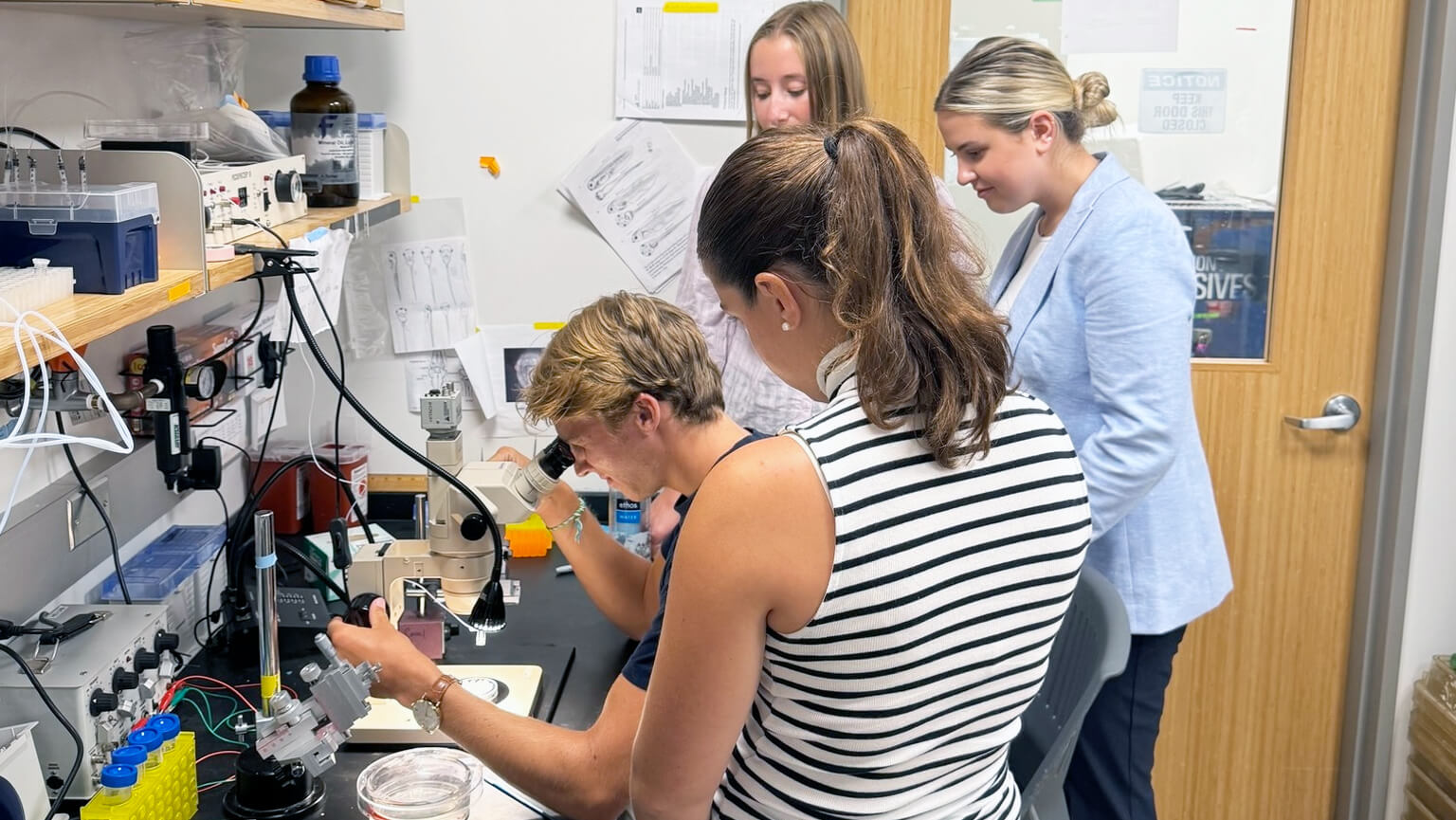Elizabeth Stone, PhD, and her student research team Eleanor Feuster ’27, Kacey McGorry ’27, Mason Macuch ’28, and Katelyn Wiehe ’27 recently traveled to Georgetown University to meet with their collaborators in the He Lab, Department of Biology.
During the visit, the group presented their research, toured the laboratory, and observed the tadpoles that will soon be used to test the molecules they have synthesized at Fairfield.
At the heart of their work is the creation of pharmaceutically relevant peptides containing noncanonical amino acids—those beyond the 20 genetically encoded building blocks of proteins. These molecules are designed to temporarily bind a specific neuronal protein, the neuronal membrane proteasome (NMP), which plays a critical role in regulating protein breakdown within cells. By inhibiting NMPs in a controlled way, Stone and her students hope to better understand what happens in neurons during learning and how disruptions in these processes might contribute to neurological disorders such as Alzheimer’s and Parkinson’s disease.
Under Stone’s guidance, the students have taken part in designing, synthesizing, and characterizing these molecules, gaining hands-on experience in reaction design, purification, and analysis. “It’s incredible to see them take ownership of their projects,” Stone says. “They’re learning to think like chemists while also appreciating the broader biological questions their work can address.”



